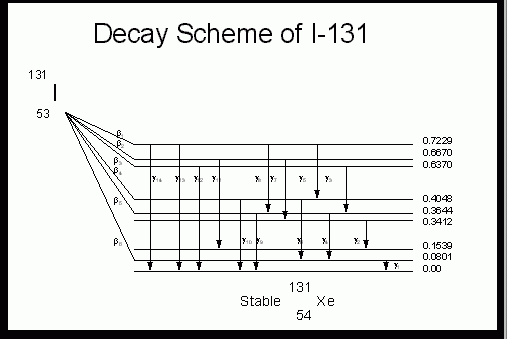![]()
![]()
Pure Beta Minus Emitter.
In contrast to diagnostic radiopharmaceuticals, therapeutic products are designed to destroy cells. The preferred mode of decay for radioisotopes used to perform radionuclide therapy is pure beta minus emission. Due to their high LET, beta particle emitters are quite capable of destroying tissue. They are far more controllable than alpha emitting radionuclides from the standpoint of distribution in tissue since an almost perfect distribution is required for effective therapy with alpha emitters, whereas a less-than-perfect tissue distribution is not critical to effective therapy with beta- emitters. This is due to the difference in range in tissue of these 2 particles (several micrometers for alpha emitters to several mm to cm for betas). In addition, beta emitters are easier to detect if spilled. Gamma-rays and X-rays are also acceptable, although they contribute significantly less to tissue damage than beta emitters.
POP TEST!
The decay scheme for I-131 indicates emission of six beta-minus particles of varying energies and emission of 14 gamma rays of different energies. The total types of emissions is 20. Therefore, True/False: 6/20ths of the total tissue damage caused by I-131 is due to presence of beta-minus emission.

ANSWER
FALSE. It has been estimated that 90% of the tissue damage from I-131 is caused by beta particles, even though there are far more gamma rays emitted during the decay process. The deciding factor is that the LET, the Linear Energy Transfer rate for beta-minus particles, is much higher than for gamma rays. In addition, the question gives no information about % abundance for each of these modes of emission, a critical factor in determining the radiation dose.
| Stephen Karesh, PhD. |
Last Updated: August 14, 1996 |